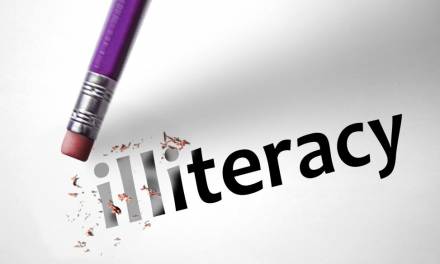In 2016, the OECD examined the literacy rates of 16- to 19-year-olds in 23 OECD countries and came to a startling conclusion – England occupied the bottom spot with more than 1 in 5 young adults having a low level of literacy.
Most teachers will be familiar with functional illiteracy and students who lack the basic skills to comprehend written texts or communicate effectively through the written word.
In a paper published in 2010, researchers attempted to narrow the inclusion criteria for who could be classed as ‘functionally illiterate’ and concluded that children in school can’t yet be considered functionally illiterate.
Yet how do we stop them reaching the stage where they might be labelled as such?
Knowing the Signs of Illiteracy
The first step towards helping any pupil you think might be struggling with literacy is to identify their problem and isolate it from any others that might be occurring around it such as bad behaviour or truancy.
Often, these manifest themselves as symptoms of something else, and they can mean that genuine struggles with literacy are brushed aside or seen as a periphery issue.
So, it’s important to identify, through consultation with other teachers and staff, which pupils avoid writing and reading because of genuine difficulties with literacy as opposed to children whose illiteracy is a symptom of other environmental or health issues.
Soliciting Help
There may be structures within your school to support students who struggle with their literacy. However, just because the structures exist, it doesn’t mean that pupils are going to be keen to access them.
Overcoming the barrier of denial, anger or frustration can be difficult and might only be possible by liaising with parents and other teachers – even then, the pieces may not easily fall into place.
In-Class Strategies
As well as working to identify students struggling with literacy and soliciting help wherever possible, there are also strategies that teachers and staff can adopt in the classroom to be more inclusive of all students.
For instance, reading aloud is something that teachers often dispense with as pupils grow more confident in their own reading ability. This can disenfranchise students who can’t easily read the material, and it may also put other students, such as non-native speakers and slow readers, at a disadvantage.
So, reading key bits of information aloud in any subject can help everyone in the class to grasp the ideas.
Similarly, it’s common for pupils studying a foreign language to keep vocabulary books, but it might not be common practice in other subjects. Illiterate students obviously don’t read widely, so their vocabulary doesn’t grow.
Developing vocab books for technical terms in any subject will help all students revise for exams and it won’t make illiterate students feel singled out.
One final suggestion is dependent on your school’s access to audio resources – audiobooks are increasingly available for key course content, whether that’s a novel or a history book.
Text-to-speech software is also a potential tool for students to use as, while it’s not perfect, it can help illiterate students access content that is only accessible in a digital format (research available through web searches, for example) and essential for a better understanding of the subject.










